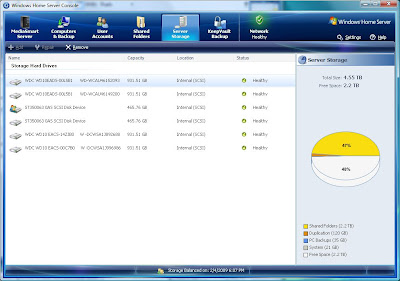Samsung LN52A750 52" LCD TV: Fan-freaking-tastic!
 We
took some of our tax return and went to Best Buy and got a Samsung
LN52A750 52” LCD
TV.
This was to replace the Sharp Aquos 37” TV we had. (The Sharp will go
upstairs to our game room so we can have a more permanent Rock Band
setup.) I was about to order from Amazon, but Best Buy/Magnolia met the
Amazon price and having the ability to take the thing back to a local
brick-and-mortar store if there’s any problem is a huge weight off my
mind. I guess I’m old-fashioned that way.
We
took some of our tax return and went to Best Buy and got a Samsung
LN52A750 52” LCD
TV.
This was to replace the Sharp Aquos 37” TV we had. (The Sharp will go
upstairs to our game room so we can have a more permanent Rock Band
setup.) I was about to order from Amazon, but Best Buy/Magnolia met the
Amazon price and having the ability to take the thing back to a local
brick-and-mortar store if there’s any problem is a huge weight off my
mind. I guess I’m old-fashioned that way.
All I have to say about this Samsung is… WOW. It’s seriously amazing. The clarity and colors on this thing are unbelievable compared to the Sharp. Without tweaking any of the settings, we plugged it in, turned it on, and started watching some of the shows we’d recorded on the DVR.
Watching The Unit, we seriously started wondering if they’d changed the film style or something since the last time we’d watched. The edges on things seemed crisper, the colors and contrast seemed better, and the motion seemed somehow different - smoother, perhaps, but just… sort of unquantifiably different. Clearer. It was almost like we were watching an IMAX documentary rather than a TV show.
When we started watching Heroes, though, we noticed the same thing - it just looks so much more crisp. That’s when we realized what a difference the TV was making. We didn’t even notice that in the store - that’s just something we saw when we got it home.
The other thing I was worried about was how the media center PC would hook up to it. With the Sharp, I had to run at a weird resolution that left letterboxing on the sides and I was afraid I was going to have to tweak some settings at a really low level to get full HD out of it. Not so! I connected it via HDMI and instantly got full 1920x1080p. No letterboxing, no problems, crystal clear. I seriously did a little dance when I saw that. I’m still smiling about it.
Anyway, I’ve admittedly only had it for a day, but Jenn and I are both floored by it. I can’t wait to try some serious gaming on this thing.
